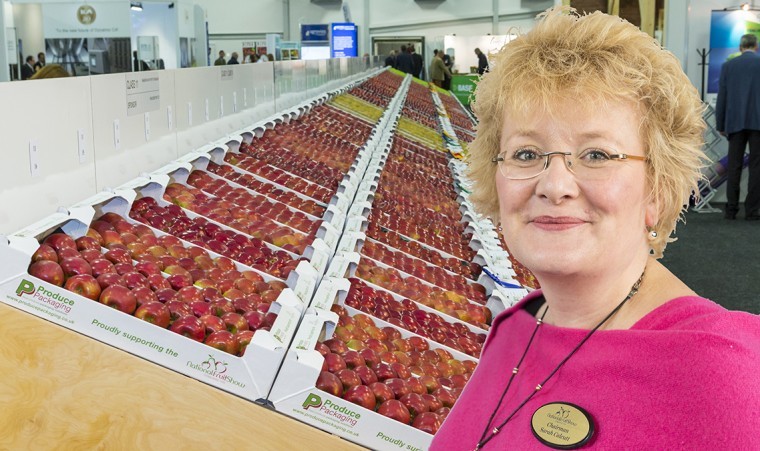A variety of speakers explained the strategy, its function and impact on the development of farming and food production in the future. The agritech strategy is entering generation two – the research and development funding is entering the seventh round with an overseas focus, but there will be funds for round eight.
This will impact on future rounds of Biotechnology and Biological Sciences Research Council grants for near market work. Won’t it be great to see more of the retailer/supplier/research institute programmes investigating some practical solutions in orchards? The innovation centres are starting to be approved – informatics and sustainability metrics is now running and will have a key role with the other centres as they come on line with the supply of statistical data and help in the translation of information.
There were two stand-out speakers on the programme. Judith Batchelor, Sainsbury’s director of brand was there in her governmental role as part of the Agritech strategy board and Jack Bobo who is the senior adviser for biotech to the United States department of state.
Judith stated very strongly that it is frightening that people just do not see that agriculture and horticulture are the most important sector in the UK. Communication from the ground up is lacking and this is impacting on the quality and volume of information that government has to guide policy statements. It is felt within government departments that they have to push information out and that very little is volunteered. You only have to look at the call to action for the horticultural innovation centre proposal where only 45 businesses responded out of the entire sector – yet it has the potential to support every business!
Jack Bobo is just the kind of speaker that I love – clearly a very intelligent man, very in control of the facts but also a good performer who engaged with the whole room. He had some excellent sound bites:
- 40% of all arable land in the world is farmed, an area the size of the African continent;
- 70% of all fresh water in the US goes into agriculture, and demand is so high that the Colorado river no longer flows to the sea;
- for every $1 invested in agriculture, there is $1.43 returned and this is a consistent return around the world. This makes it a better investment than power and people need to know how the money they spend on food is invested for the future; and
- 25,000 people will die of hunger today, one every four seconds.
We market food in a way that doesn’t provide all the information consumers need. Jack called it “Tweetification of risk” and expressed it in this equation: hazard x media exposure = perception of risk.
Food doesn’t have to be scary: we are just doing a terrible job of telling our story. Scientists are just the same – great at saying what they do, terrible at explaining why they do it. We need more science and to work at explaining why it is so important that we globally use 40% less land, causing 60% less erosion, using 50% less water and consuming 40% less energy to produce the same amount of corn.
2014 is known as the peak child year because it will see the greatest number of children born in one year in the whole of human history. Birth rate will begin to fall thereafter in direct relation to how much longer we live. If we can get to 2050 without cutting down our forests and draining our rivers, for the first time we won’t need to extend the amount of food we produce, agriculture will save the planet and will continue to restore a balance between feeding our population and sustaining our eco system.
I hope everyone enjoyed the fruit show this year. It is always hard work for our committee and staff but the reward was our best show yet with 151 entries of fruit, 96 spectacular trade stands and a lot of business. Later we were loading up a Goatham lorry driven by the amazing Mark and we were heading for central London to Kennington.
A proactive campaign from the Goathams had got the parish of north Lambeth cooking with Bramleys in preparation for our event and to get them celebrating Bramley apple pie week. Our apples are now well embedded in the community: apples were eaten at schools, in houses, in the shops including the estate agents, distributed to nurseries, homeless shelters and food banks. Apples were being baked for samosas, pies and much more. The DEFRA horticulture team were also treated to some trays of winning fruit which we will hope to repeat every year.




